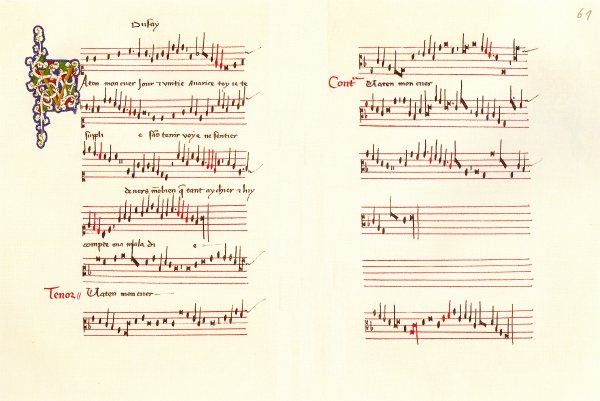Early Music Transcriptions
I recently put together a concert recreating a Mass as it would have been performed in 17th - 18th century France, using one of Couperin's organ Masses. When searching for a Credo, I came across a reference to a 1771 anonymous source from Paris entitled Faux-bourdons pour les fetes solemnelles. While mostly psalm tones were set to 3 or 4 part fauxbourdon, there is one setting of the Credo chant set to 3-part fauxbourdon in this source. I am grateful to have a received a facsimile of the score from the Biblioteque nationale et universitaire in Strasbourg, FR. Here is my transcription and a recording from our concert.
Chant du Credo en Faux-bourdon
Recorded live, November 16, 2014

Va t'en mon cuer Dufay
from Porto 714
This Rondeau is from a 1460's manuscript from Ferrara, containing several (presumably) late Dufay chansons. Oddly, the notational style is black notation with red coloration of the earlier part of the century, and this piece has no mensuration signs. Often in this style of notation from the late 14th and early 15th centuries the black notes imply major prolation (compound meter) and the red notes imply minor prolation (simple meter), but the only solution for this piece is to treat it in perfect tempus, minor prolation (modern day 3/4) with the coloration implying semiminima. This is a somewhat unconventional use of red ink since semiminima could have simply been written in. The few red notes in the tenor (which scrolls along the bottom of both pages) are more conventional 2/3 ratio. I wasn't able to make out all the text, but found the poetry on www.recmusic.org.